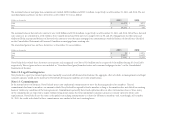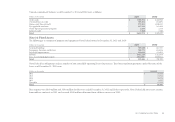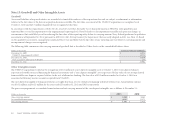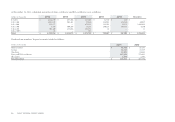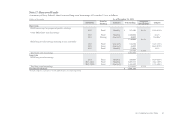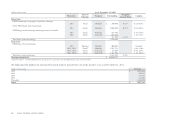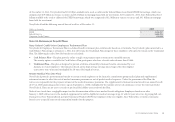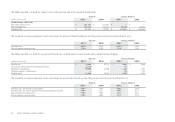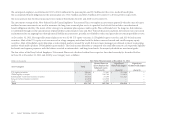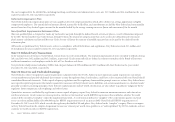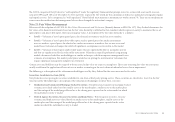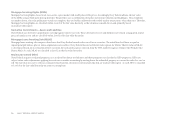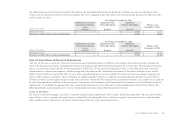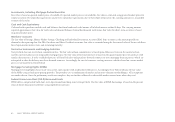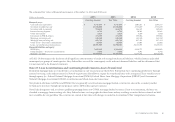Navy Federal Credit Union 2011 Annual Report Download - page 48
Download and view the complete annual report
Please find page 48 of the 2011 Navy Federal Credit Union annual report below. You can navigate through the pages in the report by either clicking on the pages listed below, or by using the keyword search tool below to find specific information within the annual report.
NAVY FEDERAL CREDIT UNION32
e anticipated employer contribution for 2012 is $30.0 million for the pension plan and $2.2 million for the retiree medical benet plan.
e accumulated benet obligation for the pension plan was $701.3 million and $545.5 million at December 31, 2011 and 2010, respectively.
e measurement date for the pension and retiree medical benet plan for 2011 and 2010 was December 31.
e investment strategy of the Navy Federal Credit Union Employees’ Retirement Plan is to employ an investment approach whereby a mix of equity
and xed income investments are used to maximize the long-term return of plan assets at a prudent level of risk that includes consideration of
benet obligation volatility. e intent of this strategy is to minimize plan expenses and keep the Plan well funded over the long run. Risk tolerance
is established through careful consideration of plan liabilities, plan-funded status and Navy Federal’s nancial condition. Investment risk is measured
and monitored on an ongoing basis through annual liability measurements, periodic asset/liability studies and quarterly investment portfolio reviews.
At December 31, 2011, the target allocation of plan assets was 32.4% U.S. equity securities, 32.5% global equity securities, and 35.1% xed income
securities. Most of the U.S. equity assets are invested in a large company index fund with the balance invested in mid-and-small company equity
securities. Most of the global equity allocation is in developed markets around the world, but investment managers are allowed to invest in emerging
markets which make up about 13% of global equity markets. e xed income allocation is comprised of a small allocation to cash to provide liquidity
for benet and expense payments with the balance invested in intermediate- and long-term bonds, the majority of which are investment grade.
e fair values of the Navy Federal Employees’ Retirement Plan assets, disclosed within their respective fair value hierarchy (as described further
in Note 21) at December 31, 2011 and 2010 by asset category were as follows:
(dollars in thousands) Fair Value Measurements at December 31, 2011
Asset Category Tot al
Quoted Prices in
Active Markets for
Identical Assets
(Level 1)
Signicant
Observable Inputs
(Level 2)
Signicant
Unobservable Inputs
(Level 3)
U.S. equity securities $ 270,241 $ 57,995 $ 212,246 $ —
Global equity securities 271,242 156,789 114,453 —
Intermediate-term xed income securities 144,513 33,188 111,325 —
Long-term xed income securities 124,810 124,810 — —
Cash 22,979 22,979 — —
Total $ 833,785 $ 395,761 $ 438,024 $ —


